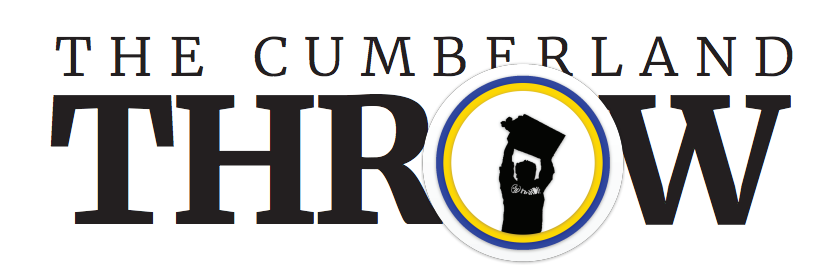What’s your image of a pre-season?
Players running to the point of being physically ill?
The tale of Dylan Brown requiring medical attention during his first preseason is evidence that this time of the year is unquestionably gruelling.

NRL strength and conditioning programs look to produce teams who can play quality footy under fatigue. But there’s a greater science to athletic performance these days and aspects such as managing training load receive a major focus.
And here’s why.
A fast increase in training workload is a major risk factor for injury, and naturally that means that returning to preseason from an inactive off-season presents potential problems.
Realistically, players have to find the right balance between maintaining fitness and relaxing/recharging the batteries for the season ahead.
Experienced players know what they will face in a preseason. Therefore, the true professionals do enough work during their time off to ensure that they can complete conditioning work. Those that don’t do this struggle.
Inexperienced players are educated about what to expect. Individuals who prepare for this place themselves in the best position for success. Even then, I’ve been told that it takes around three preseasons for a player to get optimal results from their work. Those who don’t learn, those who don’t pay heed, are often dispatched to the lower grades. I’ve seen a fair number of young stars fail at this level. The dedication is often what separates those who could from those who do.
So, whilst still maintaining the tough grind required to prepare players for an NRL season, we see pre-season schedules allowing for physically challenging days, and lighter days with opportunities for recovery.
There’s also the importance of specificity. Conditioning plans tend to match the demands of the game – short repeated runs for specific periods of time, fatigue induced by effort on effort and movements off the ground or in and out of contact, mimicking what happens on match day.
Though I’m only reporting on the field session components of the Eels preseason, I wonder whether the workload considerations are evident in my observations.
Wednesday
This was the longest field session thus far this week.
Conditioning occupied the first hour, with the players running short distances, with brief periods of rest between each.
Given that the distances were no longer than 120 metres, virtually all of the group finished as one.
Eventually the group started their runs rising from the ground or hit the ground on their turns – similar to the movements required in a defensive line.

Oregon Kaufusi
The player to impress during this period was Oregon Kaufusi. He looks to be in great condition and pushed up at the front of the group in most of the runs, performing stronger as the session unfolded.
When the clocked ticked over into the second hour, the skills work began.
Firstly, the squad split into small groups to work on defensive techniques with David Kidwell. Defensive movement close to the ruck seemed to be the focus.
This was then put into practise as the squad split into two teams, and first the left side and then the right side attack was pitched at the defence. The most impressive moment was Isaiah Papali’i hitting a hole off a Jake Arthur pass.
It was then back to more defence and working on contact. Initially the players practised the technique of the hit, switching shoulders to ensure that they are capable of making contact off both sides. It was then a matter of adding the arms and the leg drive. Hit and stick baby!
The session finished with position specific extras with the coaches – eg outside backs fielding high kicks, dummy halves working on their passing game.
Thursday
Similar to Tuesday, the time on-field saw the spine work with Joey Johns, away from the rest of the group.
Like all good coaches, the immortal insists on communication, reminding players of the importance of it should they start to get a little quiet.

Joey and BA during the previous pre-season
Whether it be passing, kicking, defensive engagements or developing combinations in the spine, it’s fascinating to hear the insights of a rugby league legend. The art of reading the opposition or selling a play to them and creating other options is being passed on during these sessions. The value for some of the younger players is that they are getting this input before they’ve hit the top grade. What a terrific foundation that is.
Unfortunately, Joey’s involvement in the 2020 season was interrupted by COVID-19. Firstly he had to coach remotely, then through a wire fence or from the sideline.
I noticed subtle changes resulting from his input during the season. I’m expecting a greater impact during 2021.
Eels forever!
Sixties


Awesome work sixties, thanks so much.
Thanks mate.
Well done mate you know how much i look forward to your articles, thanks again
My pleasure Joe.
Thanks again. This is a rare treat and appreciated in the offseason
Appreciate that feedback and support Leo.
Defensive techniques by Kidwell, sounds promising.
I think you’ll agree that the overall defence improved greatly last year – certainly the stats said so. There was obviously a problem out wide on the right
Thanks again for keeping us tragics well informed
Happy to do so mate.
Another great write up mate . I am hoping this year they really look at their defensive system again particularly the issues out wide. A lot will depend on who fills Jennings spot I suppose . I think we were definitely above par fitness level wise so we just need to sort out the defensive weakness ASAP .
They were much improved in 2020 compared to 2019. However, that right side became problematic. They’ve commenced defence already but it’s been more ruck focussed to begin with. I have little doubt that solutions to the right side will be addressed.